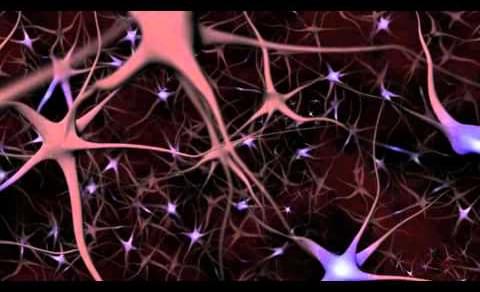Metastasis, the deadliest and most notorious hallmark of the disease, gives cancer the ability to spread throughout the body, often overwhelming immune defenses and even the…
In the southern sky shine two smudges, known as the Large and Small Magellanic Clouds. They are satellite galaxies of the much larger Milky Way, and one of their qualities has puzzled scientists. As the Clouds tumble through space, the Milky Way should be exerting enough gravitational force to knock loose their star-making material. But the smaller galaxies are still building new stars. A study published Wednesday in the journal Nature finally explains it.
What they did — “A lot of people were struggling to explain how these streams of material could be there,” Dhanesh Krishnarao, assistant professor at Colorado College and lead author of the new study, says in a NASA description of the paper. “If this gas was removed from these galaxies, how are they still forming stars?”
Microbrewery may be where your glass of milk will come from in the near future.
Precision fermentation produces milk and dairy products without cows. This can be a far more environmentally sustainable food source.
Behavior that we’d consider intelligent is oddly widespread in the animal kingdom. Animals with very different brains from ours—a species of octopus and various birds—engage with tools, to give just one example. It seems intuitive that a brain needs a certain level of size and sophistication to enable intelligence. But figuring out why some species seem to have intelligence while closely related ones don’t has proven difficult—so difficult that we don’t really understand it.
One of the simplest ideas has been that size is everything: have a big enough brain, and you at least have the potential to be smart. But lots of birds seem to be quite intelligent despite small brains—possibly because they cram more neurons into a given volume than other species. Some researchers favor the idea that intelligence comes out of having a large brain relative to your body size, but the evidence there is a bit mixed.
This week, a team of researchers published a paper arguing that the answer is a little of both: relative and absolute size matter when it comes to the brain. And they argue that a specific approach to brain development helps enable it.
28 to 34% lifespan increase in mice. I wonder if there would be side effects as a recent study showed Rapamycin and Metformin canceled each other’s side effects.
In a new study published in Aging Cell, researchers have tested several individual drugs and a combination of rapamycin plus acarbose as potential life extension agents in genetically heterogeneous mice [1].
Identification of successful anti-aging interventions is arguably one of the most challenging research problems to date. In addition to the complexity of aging, researchers have to deal with the biological heterogeneity of animals even within the same species and research reproducibility issues due to different experimental designs and approaches.
The National Institute on Aging Interventions Testing Program (ITP) was launched in 2004 with these limitations in mind. It is a peer-reviewed multi-institutional study evaluating potential lifespan-extending agents. The experiments are run in parallel at the Jackson Laboratory; the University of Michigan; and the University of Texas Health Science Center at San Antonio on genetically heterogeneous mice of both sexes.
A new study challenges the common belief that human brain’s functions such as learning, memory, and perception occur in the central part of neurons called soma. In a brain structure, neurons’ three-like feature has soma in the middle and branches called dendrites. Soma will spike whenever there is data that needs processing and dendrites will communicate with each other — but not until the University of California, Los Angeles discovered the opposite.
UCLA team tested the theory of “soma to dendrites” and found a contradicting result. Dendrites are electrically active and generate 10 times more spikes that somas. Scientists are now on to new finding that dendrites’ role is to form and store memories.
According to Mayank Mehta, senior author of the study, dendrites are not passive conduits. They themselves are moving around freely and generate spikes or brain activity. This also shows that 90 percent of the brain is being utilized since dendrites comprise 90 percent of the brain tissue. Meaning, the human brain has almost 10 times more computational capability than previously thought.
The brain is neither analog nor digital, but works using a signal processing paradigm that has some properties in common with both. Unlike a digital computer, the brain does not use binary logic or binary addressable memory, and it does not perform binary arithmetic.
For engineers, the question of whether to store information in analog or discrete form is easy to answer. Discrete data storage has clear advantages, not least of which is that it is much more robust against degradation.
Engineers have exploited this property. Provided noise is below some threshold level, digital music can be copied endlessly. By contrast, music stored in analog form, such as on cassette or vinyl LP, can be copied only a few times before noise degrades the recording beyond recognition.
The abstract basis of modern computation is the formal description of a finite state machine, the Universal Turing Machine, based on manipulation of integers and logic symbols. In this contribution to the discourse on the computer-brain analogy, we discuss the extent to which analog computing, as performed by the mammalian brain, is like and unlike the digital computing of Universal Turing Machines. We begin with ordinary reality being a permanent dialog between continuous and discontinuous worlds. So it is with computing, which can be analog or digital, and is often mixed. The theory behind computers is essentially digital, but efficient simulations of phenomena can be performed by analog devices; indeed, any physical calculation requires implementation in the physical world and is therefore analog to some extent, despite being based on abstract logic and arithmetic. The mammalian brain, comprised of neuronal networks, functions as an analog device and has given rise to artificial neural networks that are implemented as digital algorithms but function as analog models would. Analog constructs compute with the implementation of a variety of feedback and feedforward loops. In contrast, digital algorithms allow the implementation of recursive processes that enable them to generate unparalleled emergent properties. We briefly illustrate how the cortical organization of neurons can integrate signals and make predictions analogically. While we conclude that brains are not digital computers, we speculate on the recent implementation of human writing in the brain as a possible digital path that slowly evolves the brain into a genuine (slow) Turing machine.
The present essay explores key similarities and differences in the process of computation by the brains of animals and by digital computing, by anchoring the exploration on the essential properties of a Universal Turning Machine, the abstract foundation of modern digital computing. In this context, we try to explicitly distance XVIIIth century mechanical automata from modern machines, understanding that when computation allows recursion, it changes the consequences of determinism. A mechanical device is usually both deterministic and predictable, while computation involving recursion is deterministic but not necessarily predictable. For example, while it is possible to design an algorithm that computes the decimal digits of π, the value of any finite sequence following the nth digit, cannot (yet) be computed, hence predicted, with n sufficiently large.
“This is game-changing,” said CEO of company that creates drinkable water from processed produce.









